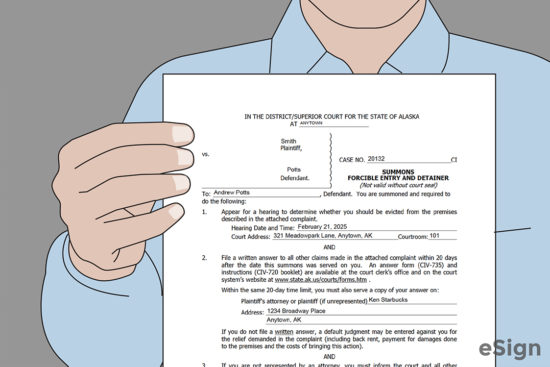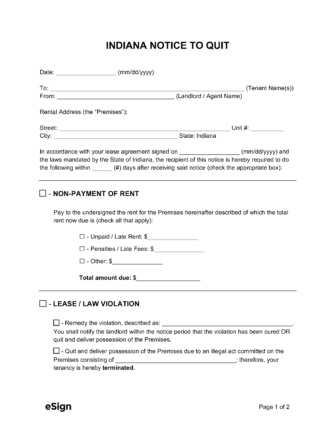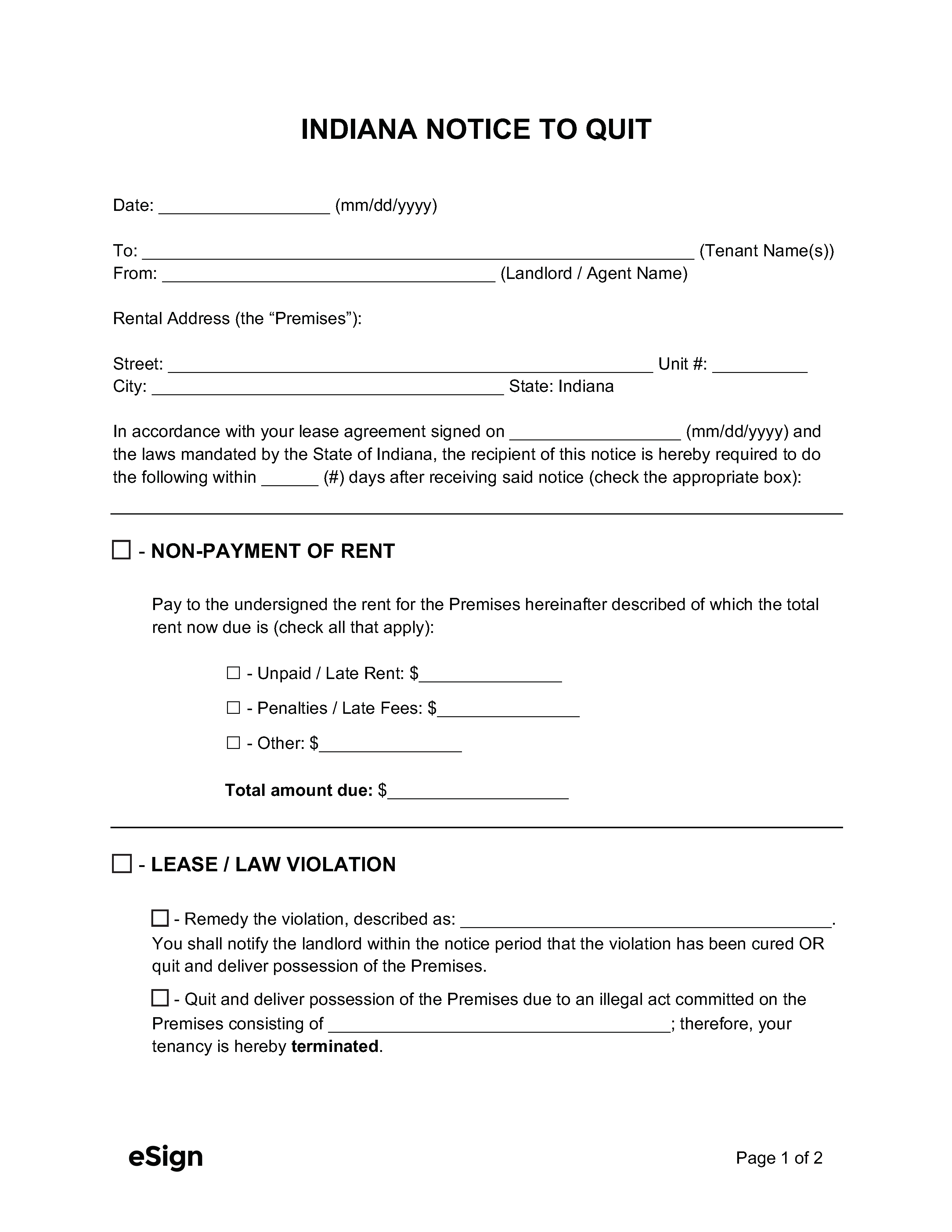Eviction Notices: By Type (3)

10-Day Notice to Quit | Non-Payment – Informs a tenant that they have defaulted on rent and have 10 days to pay the landlord or leave.
Download: PDF, Word (.docx), OpenDocument |
 Notice to Quit | Non-Compliance – Delivered to a tenant who has violated their lease, giving them a “reasonable” amount of time to cure the violation. Notice to Quit | Non-Compliance – Delivered to a tenant who has violated their lease, giving them a “reasonable” amount of time to cure the violation.
Download: PDF, Word (.docx), OpenDocument |

1-Month Notice to Terminate | Month-to-Month Lease – Terminates a month-to-month tenancy with a month’s notice. (Can be used by either party.)
Download: PDF, Word (.docx), OpenDocument |
Notice Requirements
How to Evict a Tenant in Indiana
Step 1 – Serve Notice to Quit
Before evicting a tenant, a landlord must deliver a notice to quit to give the tenant time to cure the violation (if applicable) or leave the premises.
- 10-Day Notice to Quit for Non-Payment
- Notice to Quit for Non-Compliance
- 1-Month Notice to Terminate a Month-to-Month Lease
It’s important to note that if the lease includes an express agreement to pay rent in advance, the landlord may not be legally obligated to send a 10-day notice to quit for non-payment.
Step 2 – Commence Eviction Suit

Step 3 – Serve Summons to Tenant

The court clerk will set a hearing date and issue a Summons form. The landlord must ensure that the tenant is served a copy of the Complaint and Summons at least 5 days before the hearing.
The landlord can have the sheriff’s office can serve the tenant, or the landlord can send the complaint by registered/certified mail. A Proof of Service must be completed and filed with the court in either case.
Step 4 – First Hearing

Step 5 – Second Hearing (If Applicable)

Step 6 – Writ of Possession

Court Forms + Resources
Forms
- Complaint
- Signed by: Landlord
- Proof of Service
- Signed by: Server
- Summons
- Signed by: Clerk
- Writ of Possession
- Signed by: Judge
Resources


